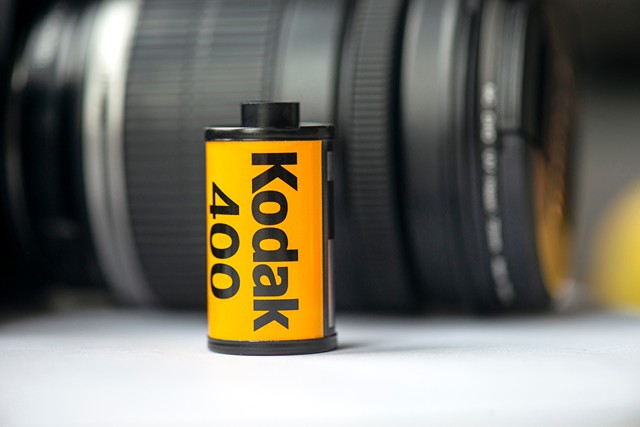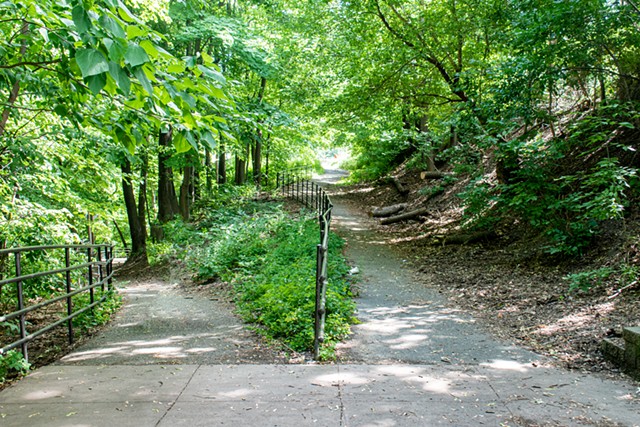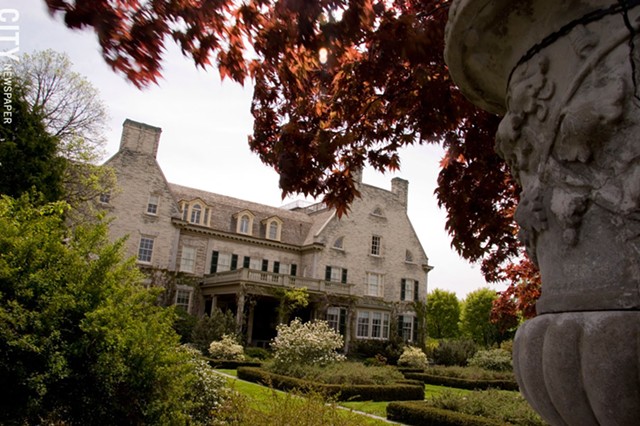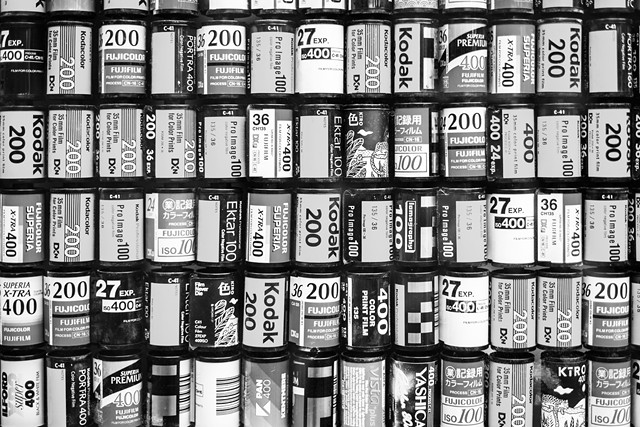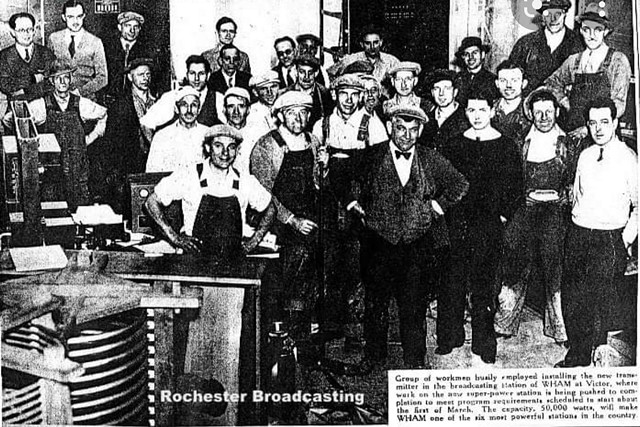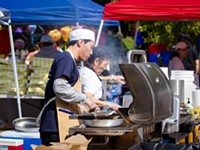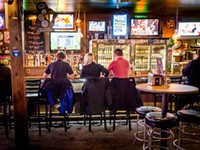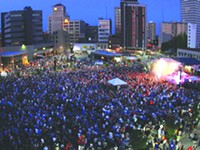[
{
"name": "500x250 Ad",
"insertPoint": "5",
"component": "15667920",
"parentWrapperClass": "",
"requiredCountToDisplay": "1"
}
]
Once the quintessential company town, Rochester branded itself the “World Image Centre” in the mid-90s as a nod to Kodak, Xerox and Baush + Lomb.
That slogan has since been retired, but the legacy of Eastman Kodak Co. lives on, extending well beyond the iconic office tower at the edge of downtown or the George Eastman Museum on East Avenue.
“One of the important origins of the community’s character was the brain of George Eastman,” the late Barber Conable, former congressman and host of WXXI’s now-defunct program “Speaking of Rochester,” said in 1999.
The number of businesses sustained and spun off are too many to count, and Kodak’s impact isn’t all positive — they have spent millions of dollars to address and help clean up the pollution it spewed into local air, water and soil, for one. Redlining, gentrification and racism were rampant among Eastman’s personal and professional endeavors as well.
The company and people that revolutionized photography are behind many of the backdrops to our “Kodak moments” still around today. Here are a few examples:
Parks
Eastman had ties to Maplewood, Cobbs Hill, Durand Eastman parks. He gave the city $5,000 to buy the land for Maplewood, and along with Dr. Henry Durand, donated the 484 acres for Durand Eastman. He also donated the land fronting Culver Road between Hillside Drive and Monroe Avenue for Cobbs Hill — joining other notables including Henry Strong (Eastman’s longtime business partner and Kodak’s first president) in donating money to buy other park land east of the reservoir.
Neighborhoods
Founded by Eastman in the 1920s, Kodak Employees Realty Corp. built the Koda Vista neighborhood in Greece and the Meadowbrook in Brighton, where it attached racial covenants to the properties, restricting ownership to a particular “class of people.” The company also founded Eastman Savings & Loan Association, the forerunner to ESL Federal Credit Union, to help Kodak employees buy those homes.
Houses
The mansion on East Avenue isn’t the only place Eastman called home. He was a child when his family moved here in 1860 from Waterville, Oneida County, and lived at seven different addresses before building the house most famously know today. While living in the Edgerton Neighborhood (1874-84) at what is now 99 Jones Ave., Eastman made his first picture on a photographic dry plate. It showed two girls and a woman in front of a house that still stands at 32 Jones Ave., on the corner of North Plymouth Ave. across from Jones Square. He also lived for 10 years at 1050 East Ave., the Wilson Soule House, now owned by Asbury First Methodist Church, before moving into his East Avenue mansion in 1905.
Kodak film
All of Kodak’s still and motion picture film — from Super 8 to IMAX! — is produced in Rochester at Eastman Business Park. The company has produced film here for more than a century, and now offers paid public tours to see the process.
Eastman Dental Dispensary
Located at 800 E. Main St. and built by Eastman in 1917, the dispensary served as a free dental clinic and the first U.S. school licensed to train dental hygienists. Additional donations by Eastman supported nose and throat treatment and orthodontics. In 1920, he donated $4 million to build a School of Medicine and Dentistry at the University of Rochester. The dispensary sat vacant for decades — apart from theatrical haunted house tours each fall — until it was renovated into Eastman Gardens apartments in 2016.
WHAM 1180
Rochester’s oldest radio station got its start thanks to Eastman (and Gannett founder Frank Gannett) in 1922, and initially broadcast from Eastman Theater.
Strong Memorial Hospital
Strong Memorial Hospital and the University of Rochester Medical Center (URMC) were founded in the 1920s, financed by Eastman, the heirs of Henry Strong and others. George Hoyt Whipple served as the founding dean of the medical school and for years, refused to admit Black students until threated with the loss of funding and nonprofit status. He and his wife were close friends of Eastman.
Brian Sharp is the investigations and enterprise editor for WXXI News. He can be reached at [email protected].
That slogan has since been retired, but the legacy of Eastman Kodak Co. lives on, extending well beyond the iconic office tower at the edge of downtown or the George Eastman Museum on East Avenue.
“One of the important origins of the community’s character was the brain of George Eastman,” the late Barber Conable, former congressman and host of WXXI’s now-defunct program “Speaking of Rochester,” said in 1999.
The number of businesses sustained and spun off are too many to count, and Kodak’s impact isn’t all positive — they have spent millions of dollars to address and help clean up the pollution it spewed into local air, water and soil, for one. Redlining, gentrification and racism were rampant among Eastman’s personal and professional endeavors as well.
The company and people that revolutionized photography are behind many of the backdrops to our “Kodak moments” still around today. Here are a few examples:
Parks
Eastman had ties to Maplewood, Cobbs Hill, Durand Eastman parks. He gave the city $5,000 to buy the land for Maplewood, and along with Dr. Henry Durand, donated the 484 acres for Durand Eastman. He also donated the land fronting Culver Road between Hillside Drive and Monroe Avenue for Cobbs Hill — joining other notables including Henry Strong (Eastman’s longtime business partner and Kodak’s first president) in donating money to buy other park land east of the reservoir.
Neighborhoods
Founded by Eastman in the 1920s, Kodak Employees Realty Corp. built the Koda Vista neighborhood in Greece and the Meadowbrook in Brighton, where it attached racial covenants to the properties, restricting ownership to a particular “class of people.” The company also founded Eastman Savings & Loan Association, the forerunner to ESL Federal Credit Union, to help Kodak employees buy those homes.
Houses
The mansion on East Avenue isn’t the only place Eastman called home. He was a child when his family moved here in 1860 from Waterville, Oneida County, and lived at seven different addresses before building the house most famously know today. While living in the Edgerton Neighborhood (1874-84) at what is now 99 Jones Ave., Eastman made his first picture on a photographic dry plate. It showed two girls and a woman in front of a house that still stands at 32 Jones Ave., on the corner of North Plymouth Ave. across from Jones Square. He also lived for 10 years at 1050 East Ave., the Wilson Soule House, now owned by Asbury First Methodist Church, before moving into his East Avenue mansion in 1905.
Kodak film
All of Kodak’s still and motion picture film — from Super 8 to IMAX! — is produced in Rochester at Eastman Business Park. The company has produced film here for more than a century, and now offers paid public tours to see the process.
Eastman Dental Dispensary
Located at 800 E. Main St. and built by Eastman in 1917, the dispensary served as a free dental clinic and the first U.S. school licensed to train dental hygienists. Additional donations by Eastman supported nose and throat treatment and orthodontics. In 1920, he donated $4 million to build a School of Medicine and Dentistry at the University of Rochester. The dispensary sat vacant for decades — apart from theatrical haunted house tours each fall — until it was renovated into Eastman Gardens apartments in 2016.
WHAM 1180
Rochester’s oldest radio station got its start thanks to Eastman (and Gannett founder Frank Gannett) in 1922, and initially broadcast from Eastman Theater.
Strong Memorial Hospital
Strong Memorial Hospital and the University of Rochester Medical Center (URMC) were founded in the 1920s, financed by Eastman, the heirs of Henry Strong and others. George Hoyt Whipple served as the founding dean of the medical school and for years, refused to admit Black students until threated with the loss of funding and nonprofit status. He and his wife were close friends of Eastman.
Brian Sharp is the investigations and enterprise editor for WXXI News. He can be reached at [email protected].
